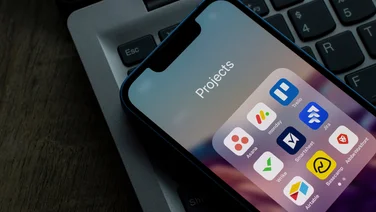To help us provide you with free impartial advice, we may earn a commission if you buy through links on our site. Learn more

We’ve all been there; accidentally deleting a file only to realise it’s important later on. Just because you’ve chucked a file from your desktop or a folder doesn’t mean it’s really gone, however. From documents to family photos, data can linger on your Mac long after it has been deleted.
Below we cover a few ways to bring back files from the dead.
How to recover deleted files on Mac
1. Check Trash
This one almost goes without saying, but we’ll mention it just in case. When you delete a file from your Mac, it automatically goes into the ‘Trash’. That’s the bin icon on your desktop, which you can click to browse a list of all the files you’ve gotten rid of. If you find the file there, you can easily restore it by dragging it onto your desktop. Think of it as a computer-based purgatory.
Be aware that, depending on your preferences, your Trash might be set to automatically empty every 30 days, or when storage is running low.
2. Check Time Machine and cloud storage
If your file is no longer in Trash, your next port of call will be a backup of your hard drive. Macs come with a feature called Time Machine, which can be used to create a copy of all your files, including apps, music, photos, email, documents and system files. It’s like a snapshot of your computer at a particular time, which can be recalled at a later date.
However, you will need to have previously created a Time Machine back to restore any files. It doesn’t happen automatically, at least not to begin with, and it requires an external storage device to hold all of the data. You can learn more about backing up your Mac in this way via Apple’s guidelines, but in a nutshell you need to connect an external hard drive and tell Time Machine to treat it as a backup disk.

The good news is that if you do have a Time Machine backup on an external hard drive, you can restore your machine using that data. You can either restore your files, or totally restore your Mac’s operating system along with the files. To do the former, go to Applications > Utilities > Migration Assistant, and follow the instructions for transferring information, selecting the option to transfer from a Mac, Time Machine backup or startup disc.
From there, select the Time Machine backup – be sure to have the external storage connected to your Mac – and choose the time and date you want to restore from. After that, you’ll be given the choice to select what information you’d like to transfer.
The bad news about all this is that if you don’t have a Time Machine backup set up, you won’t have a backup to restore from.
Before going any further, you’ll likely want to check whether the file you’re looking is kept on any cloud storage service, whether that’s iCloud, Google Drive or Dropbox. It might be the case that you deleted the file from your computer’s hard drive, but uploaded it in the cloud. Depending on the service you use, a quick search will surface the file if it’s there, and you can then download it back on your machine.
3. Use a third-party app
If your deleted file isn’t in Trash, isn’t stored anywhere on the cloud, and you don’t have a Time Machine backup, there could still be hope. A file on your hard drive isn’t technically ‘gone’ until it’s overwritten by something else, meaning that even when it’s nowhere to be seen on your computer, it could still exist – marked by the computer as available space, but not yet replaced.
There are several apps that can read these files from your hard drive, and which give the option of restoring them if possible. You might have to pay for the privilege, however. Also be aware that downloading any of these apps could, ironically, overwrite the very files you’re trying to recover. Your best bet might be to download them using another computer onto a USB drive, which can then be connected to your machine.
The main piece of kit in this arena is Disk Drill. It’s simple to use and widely known, and even comes with a free ‘basic’ version download. This is a little misleading, however, as the free version will only allow you to locate recoverable files that haven’t been backed up, but not to actually restore them. To do that, you’ll need to upgrade to the ‘Pro’ version, which costs £84.47. Still, at least you can verify the file is still there before paying up.
An alternative is the EaseUS Data Recovery Wizard, which similarly comes with free and ‘pro’ tiers but crucially allows you to recover up to 2GB of data using the former.
Whatever software you use, it will trawl your hard drive for recoverable files. The more time that has passed, the more likely your file will have been overwritten and the less likely it will still be on your computer.






